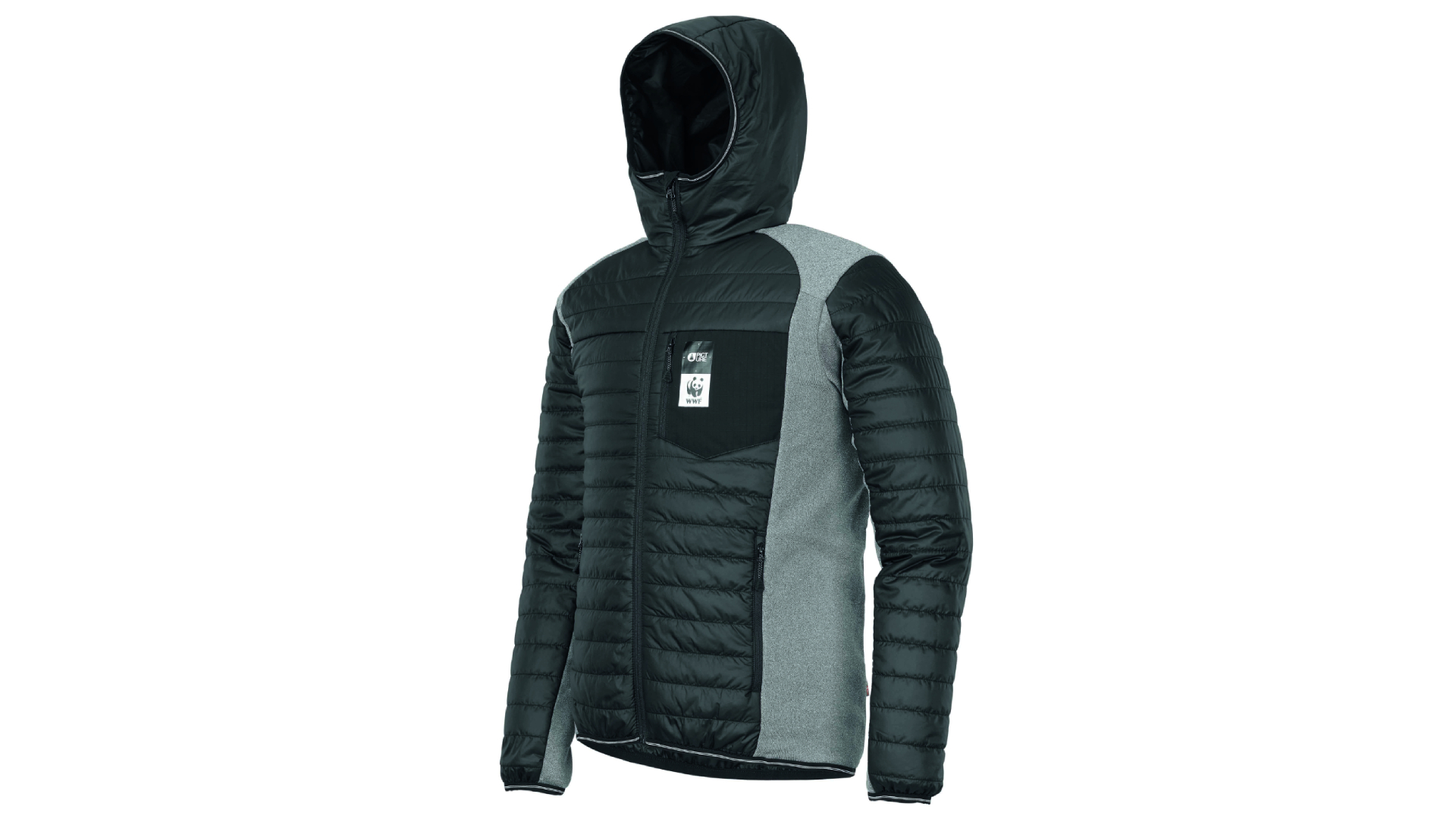Advnture Verdict
The Picture Takashima puffer jacket is designed for action on the ski slopes and is a little lacking in the warmth-giving department if worn as an outer or during less heat-generating pursuits. As a midlayer beneath a shell, however, it will do a great job whatever you’re doing, and if you start getting warm and strip the outer layer off, it’ll look the business – as it will in any après adventure setting.
Pros
- +
Synthetic fill is quick-drying and provides warmth even when wet
- +
Hybrid construction incorporates stretch fleece for excellent articulation
- +
Eco-friendly, sustainable construction
Cons
- -
Low fill weight provides limited warmth
- -
Fleece panels not windproof
- -
Polyester face fabrics comparatively less durable than nylon
- -
Basic hood
You can trust Advnture
First impressions
If you’re into skateboarding or snow sports, you’ll already know Picture Organic. If you don’t, let us put you in the, uh, picture. This French label was founded by three outdoors lovers back in 2008. From the outset, the aim was to produce high-quality, multi-functional apparel that was 100% committed to responsible manufacturing and sustainability-driven eco-design. In that relatively short time, the brand has gone from strength to strength, driven in equal parts by its impressive green ethos and its stylish designs. The Picture Takashima puffer jacket is a case in point: a synthetic midlayer that is most at home on the slopes. It employs a hybrid construction, with Primaloft Eco 100g insulation in the body and arms, combined with side panels made from Polartec Powerstretch polyester fleece. The face fabric is 20-denier recycled polyester, treated with a PFC-free DWR finish for added water resistance.
• RRP: £180 (UK)/$186 (US)
• Fill: 100g Primaloft Eco
• Sizes: XS–XXL
• Weight (size M): 494g/17.4oz
• Colours: Black/Saffron/Lichen Green/Imaginary World
- Before you buy, check out the best down jackets and puffers available
- How to choose a down jacket: everything you need to know
- Down vs synthetic insulation: each one has its strengths and weaknesses
In the field
Those stretch fleece panels make for great freedom of movement, and the trim fit means this would be the ideal layer worn underneath under a burly ski shell when carving lines in fresh powder. It works pretty well for other mountain activities too, provided you understand that this is a lightly insulated layer, not a synthetic jacket designed to deliver maximum warmth for weight in cold, wet conditions. It is very breathable and quick-drying, suiting high-output activities, but it’s not so great when worn as an outer layer. That’s because (as we found), wind tends to whip straight through the fleece inserts, robbing you of the warmth created by the air trapped in and beneath that Primaloft insulation. Similarly, the polyester face fabric is comparatively less durable than nylon, and the large amount of stitching – which mimics baffle-style jackets, even though this jacket uses a sheet insulation rather than a loose fill – would be easily snagged. But keep it underneath a windproof or waterproof shell and it does a decent job as a midlayer, providing more warmth than a lightweight fleece with little in the way of extra weight and only marginally reduced breathability.
We consider the other features to be fairly basic – there are two handwarmer pockets, a small chest pocket and a simple hood. To be honest, we could do without the latter. It has no adjustment and is loose around the face, with a tendency to billow in the wind and blow right off your head. Not an issue, of course, if you wear it with a ski helmet. All in all, it’s a jacket that we’d definitely pack for ski or snowboarding holidays, and though it’s maybe not our first choice for other outdoor pursuits, it is still able to do a job as a capable midlayer for cooler conditions.
All the latest inspiration, tips and guides to help you plan your next Advnture!
An outdoors writer and editor, Matt Jones has been testing kit in the field for nearly a decade. Having worked for both the Ramblers and the Scouts, he knows one or two things about walking and camping, and loves all things adventure, particularly long-distance backpacking, wild camping and climbing mountains – especially in Wales. He’s based in Snowdonia and last year thru-hiked the Cambrian Way, which runs for 298 miles from Cardiff to Conwy, with a total ascent of 73,700 feet – that’s nearly 2½ times the height of Everest. Follow Matt on Instagram and Twitter.


